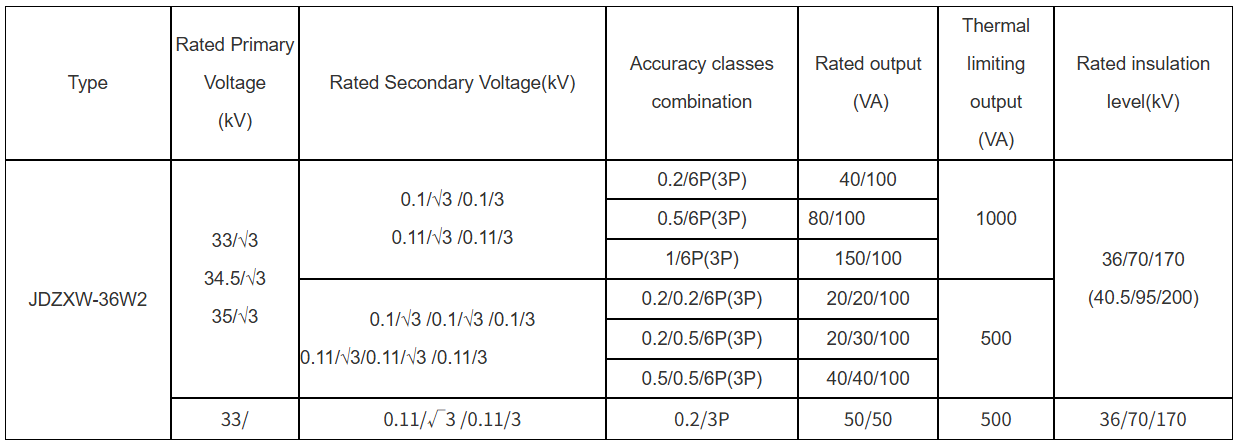| Brand | Wone Store |
| Model NO. | JDZXW-36W2 Outdoor Voltage Transformer |
| Rated frequency | 50/60Hz |
| Primary voltage | 35/√3kV |
| Secondary voltage | 110/√3V |
| Series | JDZXW |
Product Overview
JDZXW-36W2 voltage transformer adopts outdoor epoxy resin material casting and single pole insulated voltage transformer, is widely used for measuring current, electric energy and protective relaying in the electric system with the frequency 50Hz or 60Hz and highest voltage for equipment 36 kV (Up to ~40.5kV).
The iron core adopts advanced cold-rolled silicon steel sheet. High voltage outgoing line of primary winding was fetched out from top of the product; outgoing line of secondary winding was fetched out from transverse side of the product.
Key Features
Outdoor Protection Design:Adopts silicone rubber composite insulation jacket with IP67 protection rating, resisting salt fog, dust, UV radiation, and other harsh environmental factors to ensure long-term outdoor operational stability. The external insulation creepage distance ≥31mm/kV, suitable for Class Ⅲ and above pollution areas, effectively reducing the risk of fouling flashover accidents.
High-precision Voltage Conversion:Utilizes high-quality silicon steel core and optimized electromagnetic design, with voltage ratio error controlled within Class 0.2 and phase difference ≤10', providing precise voltage signals for metering devices and relay protection systems to meet high-precision measurement requirements of power systems.
Wide Temperature Adaptability:Operates within the temperature range of -40℃~+70℃, using low-temperature tough epoxy resin and high-temperature resistant insulation materials to ensure stable performance in extreme temperature environments and avoid insulation aging caused by temperature changes.
High Insulation Reliability:The insulation system passes 36kV/75kV/170kV withstand voltage tests with partial discharge ≤5pC, and is equipped with built-in overvoltage protection devices to effectively prevent damage from switching overvoltage and lightning impulse.
Main technical parameter
Rated primary voltage:30/√3kV or 33/√3kV or 34.5/√3kV or 35/√3kV etc
Rated secondary voltage:100/√3V or 110/√3V or 115/√3V or 120/√3V
Rated voltage of residual voltage windings:100/ 3V or 110/ 3V or 115/ 3V or 120/ 3V
Technical standard accords with IEC 60044-2.2003 or IEEE etc
Other parameters pls see as follow:

Remarks: Upon request we are glad to offer transformers according to other standards or with non-standard technical specs.






